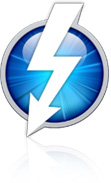When you post something on Facebook, stream a movie from Netflix, or share data with Dropbox, you’re using “the cloud.” Apple’s iCloud makes it possible for 250 million people to store their music, appointments, and documents “out there” and effortlessly access them via iPhones, iPads, Macs, and other digital devices. But what, and where, is the cloud, and how does it work? This slightly technical Wired article examines the futuristic technology inside the cloud—technology that’s likely to find its way into future PCs, tablets, and phones.
wired.com/wiredenterprise/2013/03/flash-fusion-io-apple-facebook/all
Category: Ports and Slots Revisited
Categories
-Context 14.6 Inventing the Future: The Future of Programming 3.5 Inventing the Future: Tomorrow's Peripherals 4.5 File Management: Where's My Stuff? 8.4 The Network Advantage 9.5: Inventing the Future: The Invisible Information Infrastructure Chapter 13 E-Commerce and E-Business: The Evolving Internet Economy Ports and Slots Revisited
Making the Cloud Clear
NPR.org/2011/12/26/143795017/now-hovering-above-us-all-the-cloud
If you’re not completely clear about “the cloud,” reading or listening to this short NPR story should help. Even if you understand the basics, you’ll probably be surprised by the many different ways that cloud technology is changing our world.
 Intel co-invented USB. Apple invented FireWire. Now the two companies have collaborated to produce Thunderbolt, a fast, flexible technology that may eventually make both of those earlier technologies obsolete. Born in Intel’s research labs, Thunderbolt first appeared earlier this year in Apple’s Macbook Pro. Thunderbolt will provide lightning-fast connection speeds for monitors, hard drives, input devices, and other types of peripherals, once those peripherals are redesigned with Thunderbolt interfaces.
Intel co-invented USB. Apple invented FireWire. Now the two companies have collaborated to produce Thunderbolt, a fast, flexible technology that may eventually make both of those earlier technologies obsolete. Born in Intel’s research labs, Thunderbolt first appeared earlier this year in Apple’s Macbook Pro. Thunderbolt will provide lightning-fast connection speeds for monitors, hard drives, input devices, and other types of peripherals, once those peripherals are redesigned with Thunderbolt interfaces.www.intel.com/technology/io/thunderbolt/index.htm